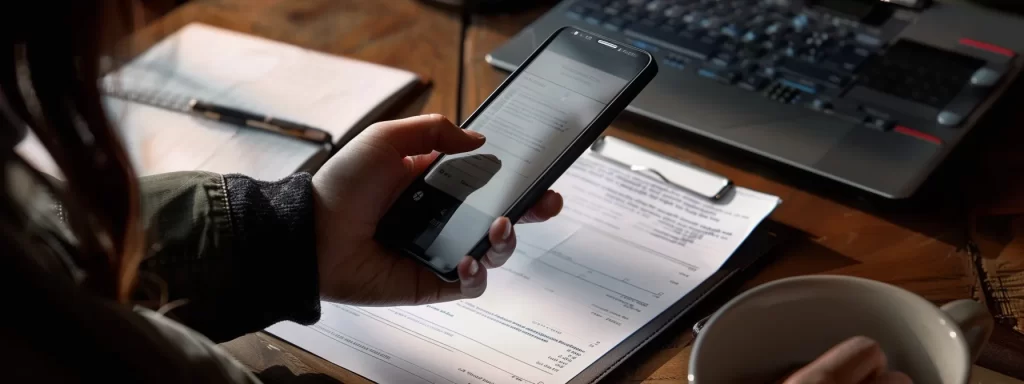Fax machines have been at the forefront of business communications for over a century, evolving from clunky, noisy machines to sleek, software-driven services. Initially patented in the 19th century, the fax machine’s ability to send documents over a telephone line revolutionized how information was shared. Over time, the invention has been refined, paving the way for new technologies and methods of communication. In this article, we’ll explore the fascinating journey of fax machines, from their earliest forms to the latest online faxing solutions that cater to modern business needs. Keep reading to discover how faxing has remained relevant in an ever-changing technological landscape.
Table of Contents
- The Original Facsimile: A Look at the Earliest Fax Machines
- Technological Advancements in Fax Technology over the Decades
- The Impact of the Internet on Traditional Faxing
- How Online Fax Services Revolutionized Document Transmission
- Future Trends: Integrating Fax with Modern Business Communication Systems
The Original Facsimile: A Look at the Earliest Fax Machines

In 1843, Scottish inventor Alexander Bain pioneered the concept of fax machines with a patent for a device that used synchronized pendulums to scan documents. His invention, an early facsimile machine, was groundbreaking and set the stage for future developments in document transmission technology.
Despite Bain’s early work and subsequent refinements by inventors like Elisha Gray, fax machines only became widely used in offices in the 1960s. These early models, though large and slow, revolutionized business communication by allowing instant document transmission over long distances, transforming how businesses operated globally.
Technological Advancements in Fax Technology over the Decades
Fax technology has evolved over time, with compression techniques reducing transmission time and enabling faster transmission speeds. The Group 3 fax protocol introduced in the 1980s made fax machines more efficient, reliable, and accessible, making them essential for professional communication and document exchange. Digital technologies, including scanning and printing capabilities, led to multifunction devices that could fax, copy, and print.
This transition from analog to digital transmission also enabled enhanced features like error correction, ensuring document integrity and legibility. Fax machine design and form factor also transformed, becoming smaller, quicker, and more user-friendly, leading to a surge in popularity across various industries. The efficiency and reliability of these evolved fax machines became increasingly dependent on their efficiency and reliability.
The Impact of the Internet on Traditional Faxing
The internet’s rise in the 1990s posed both challenges and opportunities for the faxing industry. While email and other digital communication methods replaced the need for traditional fax machines, the Internet also facilitated the development of new protocols that allowed faxes to be sent via email. Despite the rise of digital communication, faxing remained a niche due to its security and legal recognition.
Sensitive industries like healthcare, legal, and government relied on fax technology for transmitting confidential documents. The internet era pushed fax technology to adapt and integrate with new digital mediums, bridging the gap between analog and digital workflows, reducing hardware costs and maintenance, and encouraging environmentally friendly practices. Internet-based faxing introduced flexibility and relevance in an increasingly mobile and globalized business environment.
How Online Fax Services Revolutionized Document Transmission

Online fax services have revolutionized the fax machine industry by combining traditional reliability with modern convenience. They allow users to send and receive faxes without a physical machine, and offer new features like sending faxes directly from smartphones or integrating with cloud storage solutions. These services have lifted the limitations of old fax machines, enabling seamless integration into digital office environments.
They also provide compatibility with common file formats like PDF and enable electronic document signing. Online fax services address security concerns, particularly for industries handling sensitive data, through encryption and secure transmission protocols. They also offer operational efficiencies, reducing costs, improving communication speed, and enhancing productivity. This cost-effectiveness and reduced maintenance make online faxing an attractive proposition for businesses of all sizes.
Future Trends: Integrating Fax with Modern Business Communication Systems
Faxing is becoming increasingly integrated into business communication systems, with unified communications platforms combining various methods into a single interface. Artificial intelligence and machine learning are also being used to automate incoming fax routing, extract data for processing, and enhance security.
Cloud-based solutions are driving the evolution of faxing, allowing users to manage faxes, emails, and other digital communications in a unified manner. The fax industry is set to continue evolving, aligning with modern technologies to maintain its role in business communications. Despite its age, faxing’s ability to reinvent itself in the face of change will likely ensure its survival.
Altogether, the history of the fax machine is a fascinating tale of innovation and resilience, adapting to the ever-evolving digital landscape. Despite its evolution, online faxing remains a reliable and secure method of document transmission, proving its ongoing value in modern communication systems.

Andrej Fedek is the creator and the one-person owner of two blogs: InterCool Studio and CareersMomentum. As an experienced marketer, he is driven by turning leads into customers with White Hat SEO techniques. Besides being a boss, he is a real team player with a great sense of equality.
